TABLE OF CONTENTS
There’s nothing like smoking high-potency cannabis flower through a bong. Bongs have served the needs of marijuana enthusiasts for decades, and rank as one of the most classic smoking devices. A good bong should be in the collection of every true cannabis connoisseur. The typical college dormitory no doubt contains several of them.
What Are Bongs?
Bongs, also known as water pipes, come in many sizes, shapes, and colors, but all of them contain water, which effectively cools and filters cannabis smoke before it reaches the lungs. Similar to a hookah, a bong is typically smaller and designed for one user at a time, while some hookahs have multiple hoses, each with a mouthpiece. Bongs don’t employ the use of hoses. Instead, the smoker’s mouth is placed over an opening at the end of a tube through which smoke travels.
How to Smoke From a Bong
The manner of cannabis delivery with a bong differs from a pipe. When taking a “bong hit,” a match or lighter flame is held above a bowl containing ground cannabis, just like smoking a pipe—but that’s where the similarities end. When inhaling, smoke passes through the water in bubbles, then through the tube to the smoker’s mouth. Bongs have carburetors that the person smoking controls. These typically consist of a hole in the side of the bong above the water chamber or a sliding, removable bowl.
When inhaling through the bong, a finger over the carburetor allows smoke to collect within. To activate the carburetor, the smoker’s finger is removed from the hole or the sliding bowl is slid off to cause all of the smoke within to rapidly travel through the tube and into the lungs. The person smoking tends to get much more smoke into his or her lungs than when using as joint, blunt or pipe. The sudden blast of water-cooled smoke can cause coughing fits among those who inhale too much.
Smoking from a bong typically requires a hit or two for most consumers—much fewer draws than if using a pipe or joint. The euphoric rush that comes from a bong is more profound due to the cooled smoke and the large amount of smoke inhaled. Bongs are larger in size than pipes, so they have a larger chamber to hold in smoke. Most cannabis connoisseurs love their bongs and often spend quite a bit of money for good ones.
Benefits of Using a Bong
What makes a bong so appealing? Why would you choose a bong over a pipe or joint? What are its main selling points?
Some of the attraction no doubt comes from the impressive size and interesting decorations on some of them. Many bongs are well over 1½ feet long, with some being much larger. Artisan glass blowers can create functional and stylish bongs in a variety of striking designs. High quality bongs can display the artistic skill of a glass blower through inventive and original designs.
There’s also the social aspect of bong use. While many people use bongs when smoking solo, a good bong definitely lends itself to a party experience. Due to their large size, most bong use takes place indoors while friends gather together. Bongs allow users to finish a bowl by themselves or share if it's a particularly large bowl. Some bongs may be so tall that they require a second person to light the bowl and activate the carburetor while the other person inhales.
Another appealing aspect of bong use is that most bongs have one-hit bowls, ensuring that every smoker gets a fresh, terpene-rich draw when it’s their turn to smoke.
Most importantly, bongs provide filtration of the smoke with the use of water. Water filtration is helpful in producing smoother and cleaner smoke. Some research indicates that filtration can remove harmful components such as toxins without reducing the amount of THC in the smoke.
Overall, bonds are a convenient and effective tool to smoke dry herb and even concentrates. Choosing the right quality bong affects how it functions and how long it will last. Proper maintenance can help ensure your bong looks good and remains functional for many years to come.
What Are Bongs Made Of?
Bongs are made out of a variety of materials, each with their own advantage and disadvantage. Here are some of the most common bong materials:
- Acrylic: Lightweight and long lasting. These are the most affordable you can find.
- Silicone: Super durable and easy to travel with.
- Ceramic: Superior flavor in a variety of designs.
- Glass: The best flavor and smoke of the bunch.
What Type of Bong Is Best?
Selecting a good bong can result in a significant investment. The least-expensive bongs are the small, acrylic, single-tube varieties that can cost as little as $20, while those with loftier price tags are usually handmade out of glass by skilled artisans. Some glass bongs have more-elaborate designs, with rounded smoke and water chambers. While single-tube acrylic or silicone bongs are more utilitarian and less flashy, they perform well and achieve the desired result. Just as either a VW or Cadillac will get you to your desired destination, one is more stylish than the other.
Let’s examine more in-depth some of the most common materials used for constructing not only bongs, but pipes as well. There are pros and cons to each of these materials, and what may be an ideal bong for one person may not be for another. The size of the bong, its design, and the materials used in its construction generally dictate the price point, but a large, fancy bong may not appeal to everyone. For some smokers, the durable and utilitarian bongs suit their needs better. For these people, the “less is more” axiom holds true.
Glass Bongs
Glass bongs are typically the most expensive and coveted by cannabis smokers. They usually produce the best-quality smoke and the most impressive appearance. The smoke is smoother and less harsh than that of plastic bongs, largely because of the ability to clean them more thoroughly. Although glass bongs allow for a more thorough cleaning, the elaborate nature of some of their designs makes the process more time consuming.
Besides the prestige factor and higher quality, glass bongs do have some disadvantages. One of the most obvious drawbacks to owning this type of smoking device is its fragile nature. Glass bongs are easy to break, and there’s no disguising the fact that their tall design makes them easy to tip over and spill—if not break. For this reason, selecting a glass bong with a wide, sturdy base is a wise decision.
If you choose to travel with your glass bong, a protective case with a snug fit will be necessary for anyone but the most careful person—and even then, accidents can happen.
Pros: High-quality, smooth smoke, incredible flavor
Cons: Vulnerable to breakage, not easy to travel with
Ceramic Bongs
Similar to glass and with similar prestige, a good ceramic bong can have unique charm and appeal. They range in design from very simple to elaborate. More than one high school or college student has created their own fantastic ceramic bong on a potter’s wheel. Creating a good one will require some skill, and a stealthy demeanor may prove necessary when placing the bong (“vase”) into the kiln for firing.
Because their construction is usually thicker than a typical glass bong, ceramic is also a bit more durable. That said, ceramic bong owners shouldn’t have a false sense of security that their smoking pieces are rough-and-tumble devices—they definitely are not. If dropped or struck, they will break nearly as easily as glass.
The glaze on these bongs allows for creative and fun decorations and adornment. The elaborate design is only limited by the skill of the maker. A nice ceramic bong stands out and garners attention in the same way a good glass bong will. You will likely see them less often in a well-stocked dispensary or head shop, but when you do encounter them, they are definitely worthy of your consideration.
Pros: Durable, artistic designs, affordable
Cons: Vulnerable to drops and breakage, not common (limited accessories)
Silicone and Acrylic Bongs
The most common bongs are the ones constructed from silicone or acrylic. These bongs usually have a simpler design than some glass bongs but can be quite attractive. They come in nearly every color of the rainbow, which makes them stand out more distinctively than some glass bongs. Although they may lack the “wow” factor of some glass bongs, there are some definite advantages to owning a silicone or acrylic bong.
The biggest advantage to owning a plastic bong is its durability. You can tip it over all you want, with the most serious consequence being smelly bong water spilled on your carpet. Acrylic bongs are ideal for road trips and local hiking excursions. Just toss them in a bag with a bottle of water, and you’re set to hit the road.
Because of their simple designs, acrylic bongs are usually easier to clean but more difficult to clean thoroughly because their surfaces tend to retain more resin and grime than glass bongs. This can sometimes result in a subtle dirty plastic flavor if the bong is not cleaned thoroughly. Regardless of the material from which it’s constructed, a bong should be emptied and cleaned after each use to ensure the smoke from it remains clean and fresh tasting. You want to taste the terpenes from the flower, not the material from which the bong is constructed. Regular cleaning guarantees a rewarding and flavorful cannabis experience with each use.
Pros: Affordable, variety of colors, easy to clean, durable
Cons: Lack of customization, less flavorful than other materials, inefficient diffusion and percolation, can be made with low quality plastics
Silicone Bongs
Silicone bongs are one of the newer options on the scene. This material offers an affordable and durable option for those who want a step up from acrylic designs. Silicone material is one of the most durable around. It's soft and malleable design is virtually unbreakable. Whether it's a low or high drop, your bong will be left unscathed.
Because of its unique design and material, these bongs are easier to travel with. Simply bend or fold it into your bag and you're good to go. It's not as bulky as a glass bong and much lighter. If you don't want to risk breaking your glass bong while on a trip, bring along your silicone bong.
Pros: Virtually unbreakable, affordable, easy to travel with
Cons: Lackluster performance compared to glass, not very customizable
Pipes
Infinitely more durable than bongs, the trustworthy cannabis pipe can experience lots of knocking and dropping without showing any sign of damage. Pipes are made from a very large assortment of materials. Not only are glass pipes widely available, but pipes with wood and silicone in their design are as well.
Metal pipes and glass pipes are extremely popular and durable for obvious reasons. They also produce the cleanest smoke because of the ability to clean them thoroughly. There is little risk of breaking or wearing out a metal pipe. Usually the only need to replace them occurs after their owners lose them. Glass pipes can break, but they usually consist of thick glass that is somewhat durable. There is prestige in owning a good glass piece. As long as they’re kept reasonably clean, these pipes will consistently produce thick, clean smoke.
How to Choose the Right Bong For You?
As you can see, there are many bong materials you can choose from. Each offers a unique advantage over the other. Ultimately, it's up to you which one fits your needs and lifestyle. Is deer searching for a bong, here are a few tips to keep in mind:
- Size Matters: Bigger isn't always better. The size of your bong affects your overall experience. For instance, a new user might get overwhelmed by smoking from a tall bong. If you're always on the go, a small bong is the perfect size to fit in your backpack and provide you with hits wherever you go. For the connoisseur or those who need a large dose of cannabis, a larger bong is the right choice for those big hits.
- Durability: Consider your lifestyle and how vulnerable your bong will be to drops and breakage. If you're known to bump into furniture or have a clumsy streak, your best bet is to stick with silicone or acrylic bongs. Choose a bong that has a sturdy base to keep it stable on whatever surface it's on. If you're not worried about breaking your piece, consider a glass design meant to reflect your personal style.
- Filtration: Bongs differ in the type of filtration they provide. For instance, percolators in a bong help cool and filter the smoke. Consider the different types of percolators available including honeycomb percs to showerhead percs. While some percs can provide superior filtration, it can increase the drag. That means you will have to inhale more forcefully compared to no filtration.
- Maintenance: Maintenance and Care should be considered when choosing a bong material. Over time, resin builds up in the chamber, bowl, and elsewhere. Tall bongs with several percolators are functional but can be difficult to clean compared to a smaller and simpler piece. Consider investing in an ash catcher to contain the ash, increase filtration, and reduce cleanup time.
Materials Needed to Clean Your Marijuana Bong
There are certain materials that are necessary to keeping your marijuana bong clean. Therefore, you should gather these first. These include:
- The actual bong or pipe
- Clean water from the tap
- Soap or other washing liquid
- Zip lock bag
- Epsom salt
- Q-tips
- Rubbing alcohol
Instructions on How to Clean Your Marijuana Bong
There is a specific way to clean your marijuana bong after you have gathered all the materials that is necessary. The instructions are as follows:
- Put soap or washing liquid into hot water and use this to pre-soak the marijuana bong piece. The washing liquid will break up the undesirable stuff that sits on the glass or plates. When the bong is pre-soaked in washing liquid, it makes it easier to fully clean it, getting rid of the dirt or debris. Be sure to soak for at least 24 hours or more.
- Put the rubbing alcohol into the zip lock bag and shake it up, but don't stir it. Close the zip lock bag after pouring in the rubbing alcohol before shaking. Or you can put the dirty marijuana bong inside the zip lock bag and pour the rubbing alcohol into it. Make sure it is fully submerged. To make sure that it is cleaner, pour the rubbing alcohol inside the bong too. You will find the solution change color, if your smoking device needed extra cleaning. You may have to repeat the step more than once to ensure that your marijuana bong is adequately cleaned.
- Adding Epsom salt to the rubbing alcohol solution will give a better clean. Be sure to add enough Epsom salt to make a difference. Shake the zip lock bag again so the Epsom salt can penetrate the clogged or built up resin in your marijuana bong.
- Now rinse your marijuana bong with hot water after removing the additional resin Use the Q-tips for optimum airflow and to clean residue from small parts that make up your bong.
- Rub it dry using a cloth made with microfiber.
Advantages of Using a Bong For Weed
A bong is a great way to consume cannabis or as some would say ‘smoke cannabis.' It is an iconic method that has existed for a long time. The bong is a device that comes in a wide range of shapes and sizes and colors. It sometimes comes as a plastic tube or at times, it comes as a large rig featuring glass work and an ice chamber. Many experts think that in comparison to joints or spliffs, the bong is a healthier method of smoking cannabis.
Bongs are also known as water pipes, featuring a cylinder-like structure that has a wide base, which holds the water. When you smoke cannabis using a bong, the smoke travels first through the water prior to inhaling it. So, you get a smoother experience than you do with a joint. You will hear the water bubbling as the smoke passes through, giving you a nostalgic feeling and therapeutic experience.
Using A Bong
When you get ready to smoke cannabis using a bong, you would place the tube's opening against your mouth, applying the flame to the bowl where you placed the cannabis. You would gently inhale so the tube can be filled with smoke.
Depending on the structure of your bong, you would put a finger over a small hole while you inhale or you would attach the tube to the bowl and then pull the smoke through the tube. The process is quite simple when it comes to bongs since they are the traditional method used to smoke cannabis. Let's now look at some of the benefits of using the bong.
The Benefits of Bongs
First of all bongs are one of the easiest methods of smoking cannabis. The device is simple to operate. All you have to do is to light up the bowl and begin to inhale from the tube or mouthpiece. Bongs are the easiest to use to smoke cannabis as it compares to the blunt or joint.
There is nothing to roll or grind. You don't need any external device except for your lighter, cannabis bud and possibly a mesh screen.
When you smoke cannabis using a bong, you get a smoother hit. And the reason for the smoothness is the smoke passing through the water in the bowl. The water cools down the actual smoke, resulting in a satisfying and less harsh experience while inhaling.
In other words, the water filters the smoke in various ways, removing harsh substances. If you have a glass bong, you will get a smoother hit because they don't leave residue in your water.
You will also get a bigger hit with the bong when you smoke cannabis. For example, if you were to roll a joint to smoke, it could take you up to fifteen minutes to feel the THC effect. With the bong, the hit comes pretty quickly and it comes in waves, giving you an immediate high from the rush of THC.
The Durability of Bongs
Bongs are quite sustainable and durable and will last you for years, if you adequately take care of your device. This is quite appealing to folks with an eco-friendly stance.
While you probably have to pay a fair amount for your bong, it will work out to be cost effective and cost efficient in the long run because you will be able to keep it for a long time.
Best Bongs For Smoking Weed
1. 4-arm Perc Beaker Ice Bong
Grasscity.com is known for its noble mission of making quality glasswork more available to the mass. This is why most of their products are generally affordable without sacrificing the quality of their work. One of the best examples of that is their 4-arm Perc Beaker Ice Bong.
Upon first glance, it is easy to say that the color and the construction of the Bong is excellent. It is made from durable borosilicate glass, so you can use it for a long time. It also comes with an ash catcher to prevent ash and debris from contacting the water.
However, what makes this bong different from the rest is its slitted 4-arm tree. It will enable the user to achieve amazing diffusion and cooler hits.
2. Diamond Beaker Bong
You can find premium bongs from fatbuddhaglass.com for a wide range of uses. However, one of their most noteworthy products is their Diamond Beaker Bong, which is aesthetically pleasing and very functional.
What makes this bong special is its 12 sided diamond beaker bong. It also has an ice catcher and matric percolator for more outstanding performance.
3. Single or Double Showerhead Perc Classic Straight
If you are looking for a more traditional looking bong, you might want to check out smokecartel.com's single or double showerhead perc classic straight bong. The single perc is 12 inches tall, while the double perc is 14 inches.
This is on the top list because of its excellent craftsmanship and performance. Its performance is even made better with its ice pinch feature that helps create ultra smooth hits. On top of that, it is relatively affordable, given its quality.
4. The Mini Bong
The mini bong from dailyhighclub.com is a popular choice for several important reasons.
The first reason why many fans love it is because of its portability. As its name suggests, it is small, so it is easy to pack without getting any attention if you travel frequently.
Meanwhile, the second reason is that this is a very affordable bong. You will definitely get value for your money on this one.
Lastly, despite its small size, it offers excellent performance. It has two water pipes with a carb and fixed grommet stem that is perfect for smoking.
5. Graffix 12-inch Bubble Skinny Acrylic Bong
This bong from smokea.com is among the most stylish favorites in 2020. The Graffix 12-inch bubble skinny bong comes in 4 unique colors in a traditional bong design.
It has a well-shaped mouthpiece that allows you to fit it around your mouth comfortably. It also has a custom glass downstem that enables it to create a smoother and enjoyable smoking experience.
On top of that, the base is removable. This is a huge plus factor if you don't like bongs that are difficult to clean.
6. GRAV Gravitron Gravity Bong
On your first look at this product from 430science.com, you might think that this bong is an empty liquor bottle. However, that is not the case because it is indeed a gravity bong that is ideal for entry-level weed consumers.
It is manufactured by a brand name GRAV is known for its excellent quality of glasswork. The best thing about this particular model is that all parts of the bong are replaceable and have a reasonable price. This is something that is not offered by other brands, which is a huge positive for them. There is no wonder this is one of the top 10 best bongs.
7. 16-inch Double Honeycomb
Thickassglass.com offers high-quality bongs with premium performance. Their 16-inch double honeycomb variant is among their top sellers, and it is considered by many as one of the best because of its excellent performance.
However, make sure that your wallets are ready when you shop here because premium quality means premium price as well. But, by the end of the day, you will get a high-quality product making it worth it.
8. 16-inch Voyager Bong
If you are looking for the top of line bongs, you should visit vitaeglass.com. Their current collection features the exquisite 16-inch voyager bong. It has a sleek yet functional design that creates smooth and cool hits for you and your friends.
This bong is constructed using top of the line borosilicate glass. It is non-porous, and it will not absorb chemicals and odors left behind from previous sessions. It is very easy to clean, as well.
9. 18-inch Tube Maverick Glass
You can get this 18-inch tube maverick glass bong from dankgeek.com. It comes with a 14mm male bowl and 14mm diffused down stem that is removable for easy cleaning.
On top of that, it's made with borosilicate glass, which means it will not stain easily or retain residues from previous sessions. This particular bong also comes with decals, which may vary in colors.
10. Spirit Halo Beaker Bong
This bong that you can get from Smoke Cartel may look like it has a downstem, but it does not. It has a uniquely crafted spearhead that you will not find in other brands. Spirit Halo Beaker also features a halo shaped splash guard that also functions as a grip point.
Another reason why this bong is popular is because of its wide flare mouthpiece design. It creates a seal when it's time for you to smoke for a better experience.
Gravity Bong & How To Make One
What is a Gravity Bong?
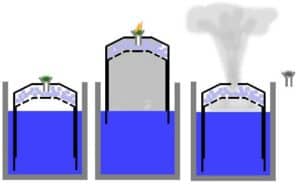
A gravity bong is known by many names — GB, geebie, jib, bucket bong, hookah, reverse gravity bong, etc. Gravity bongs are homemade devices used for smoking or consuming cannabis — a rather ingenious invention that makes the cannabis experience a bit more worthwhile. Every marijuana smoker should definitely get their hands on this product.
Quite a number of varieties of gravity bongs are available on the market today. Users have the liberty to choose the ones they most prefer. If you’ve ever used a gravity bong, then you're aware that the device typically extracts as much smoke as possible when you light up your dried marijuana herbs. The device then pumps the extracted material into your lungs.
Note that a gravity bong is often made entirely of glass (some, though, are built from plastic), and can be made at home in a few simple steps.
How Does a Gravity Bong Work?
Gravity bongs work by submerging a small bottle inside a gravity bong bowl containing cannabis. The bowl is placed on top of a larger bottle or bucket of water. The user lights up the cannabis, which burns slowly and heats up the water. At this point, you can slowly draw the bottle out of the water to fill it with smoke from the burning cannabis.
Next, you undo the lid and place your mouth over the bottle’s opening. Push the bottle down to allow gravity to bring up the cannabis smoke into your lungs.
Can New Users Start With Gravity Bongs?
A gravity bong would be great fun for already experienced consumers. At the least, you already know your tolerance level, and what strain of weed works well for you. But for users who are relatively new to cannabis, it's best not to start with gravity bongs.
With the simple steps highlighted in the procedure below, you can make yourself one for use at home. Otherwise, you can buy your preferred type from the market.
How to Make a Gravity Bong at Home — Using the Bucket Bong Method
Making a gravity bong is a relatively easy job. Thankfully, most of the items you'll need to build it are already available in the house.
There are at least two excellent methods for constructing your gravity bong at home. Here, we'll go through the bucket gravity bong method, which is the most common method. A bucket gravity bong typically uses water to push the cannabis smoke up and out of an empty bottle, directing it into your lungs.
“
There are over 300,000 jobs in the cannabis industry. CTU trained me for one of them!

Makes $24.50 @ THC +
Materials Needed
To make a bucket gravity bong, you'll need the following items:
- An empty plastic bottle
- A container filled with water, preferably one larger than the plastic bottle
- Scissors
- A drill
- Downstem and bowl, or aluminum foil
Directions
#1 Making the Bong
Get the empty plastic bottle and cut it in half. What you actually need the rest of the way is the top half, so feel free to toss the bottom of the bottle away.
#2 Prepping the Bowl
For this step, you have two different options. The first involves using an actual downstem and bowl, the same kind of combination you'll find in a regular rig. Next, drill a hole into the lid of the cut bottle, then press the downstem into the hole and slide the bowl into the downstem.
Note that for best results, the hole you drill into the bottle top should be precisely the same diameter as the downstem, such that when the downstem is inserted into the hole, you would have an airtight combination
Aside from using an actual downstem and bowl combination, an alternative is to use a DIY bowl with aluminum foil. Fold a square piece of foil in half and place it over the top of the empty bottle. Next, use your fingertip to create a slight depression in the aluminum foil by pressing it down. Finally, with the aid of a toothpick, needle, or any sharp-pointed object, create several tiny holes in the foil.
#3 Fill the Container With Water
At this point, you can use a bucket or any sizable bowl as your container. Your bucket bong, as well as your downstem and bowl, are almost ready for use. Fill the container with some water, but not all the way to the top. This is because you'll later need to press the bottle down into the water, so you want to avoid spilling the water.
#4 Your Bucket Gravity Bong is Ready!
At this point, you're ready to light up and smoke your cannabis. Place a pinch of your preferred ground cannabis into the bowl. Hold the gravity bong in one hand and push it down into the water. Be careful not to spill the water.
#5 You Can Now Light Up and Take a Hit
While the gravity bong is kept submerged in the water, use a lighter to light up the cannabis. Gently and slowly begin to lift the bottle up out of the water once the cannabis starts smoking. This action creates a vacuum that sucks the cannabis smoke out of the bowl, and into the empty plastic bottle.
Note that you can also use a hemp wick to ignite the cannabis. Also, do not lift the bottle entirely or fast out of the water as you risk losing all the smoke. Your aim is to lift the bottle up enough to draw all the smoke down into it without fully emerging from the liquid.
Now that you've got your cannabis smoke inside the bottle, gently remove the downstem and bowl, then place your mouth over the opening of the bottle and inhale. Once more, push the bottle down again into the water with care. Now, the smoke is forced up out of the bottle and into your lungs.
Is Gravity Bong More Effective than Other Means of Consuming Your Cannabis?
Yes, smoking cannabis as gravity bongs extracts and forces heavily concentrated smoke into your lungs, making you ‘higher'.
Your lungs are filled to capacity with each hit, unlike when you draw smoke from wrapped ground weed. Because of the heavy THC content in each pipe, gravity bongs are not very well suited for newbies in cannabis consumption.
Final Thoughts on Bong Materials & Bongs
There’s no one single material that produces a superior bong or pipe, and there are pros and cons to all of the various materials used in their construction. All smokers must evaluate the qualities that define a superior smoking device for their individual needs and purchase wisely based on that criteria.
Interested in learning more about the industry? Enroll in Cannabis Training University’s online cannabis courses. Our courses take you through every aspect from growing to cooking to extractions and more. Affordable, convenient, comprehensive, and renowned. CTU is the best place to earn your stripes.

Fred Hernandez
Fred Hernandez is a highly accomplished and versatile writer, boasting an extensive background in the cannabis industry. With an in-depth understanding of various sectors including cultivators, processors, retailers, and brands, Fred's expertise spans across the entire cannabis landscape. As a prominent contributor to CTU, he consistently delivers insightful articles exploring the latest developments, news, and regulations shaping the cannabis industry. Whether it's delving into the intricacies of cannabis products, cannabis strain reviews, or providing comprehensive analyses of cannabis laws, or sharing expert insights on cannabis cultivation techniques, Fred's wealth of knowledge positions him as an invaluable writer and educator for all cannabis-related subjects.





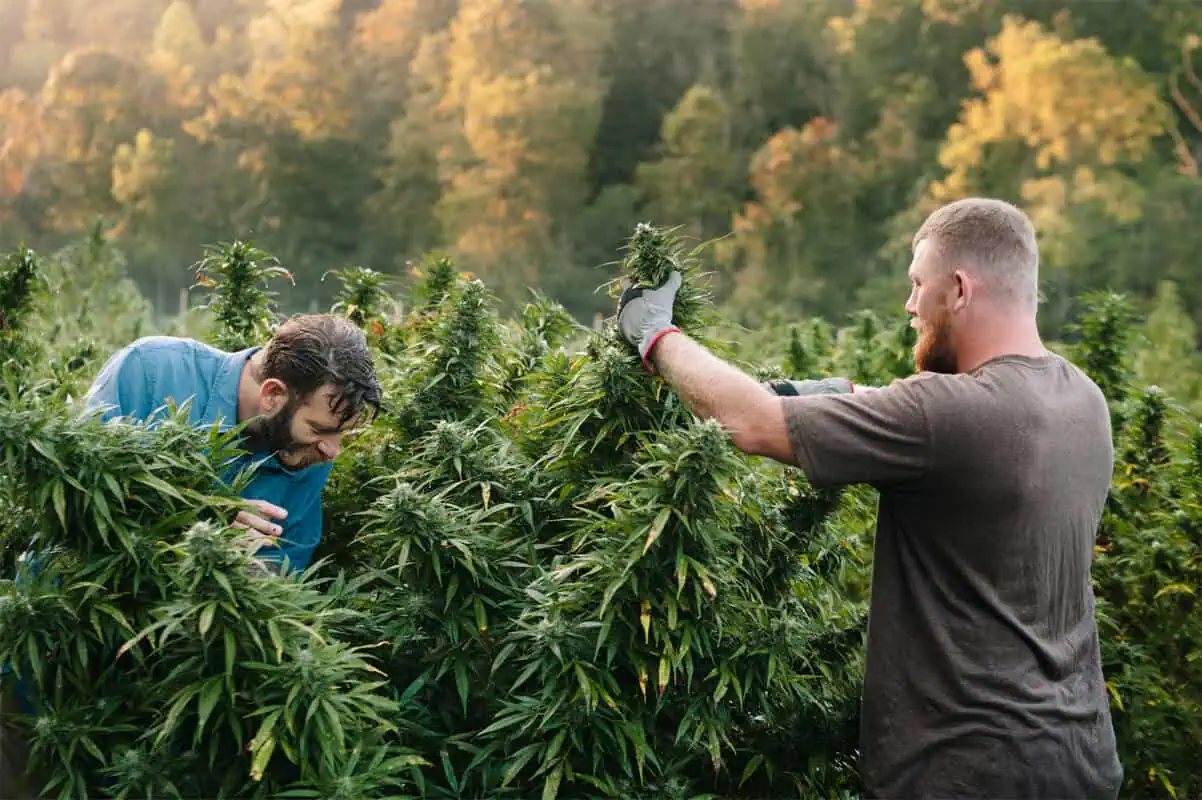

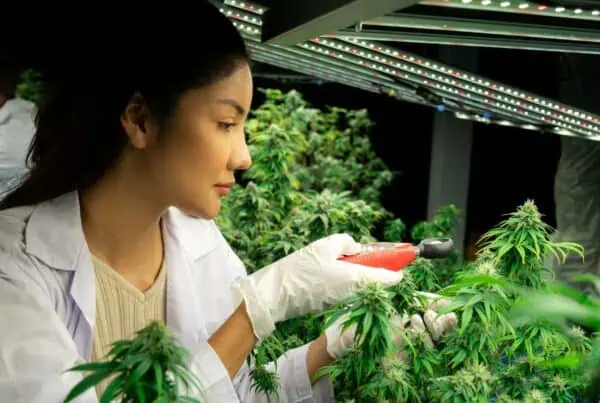
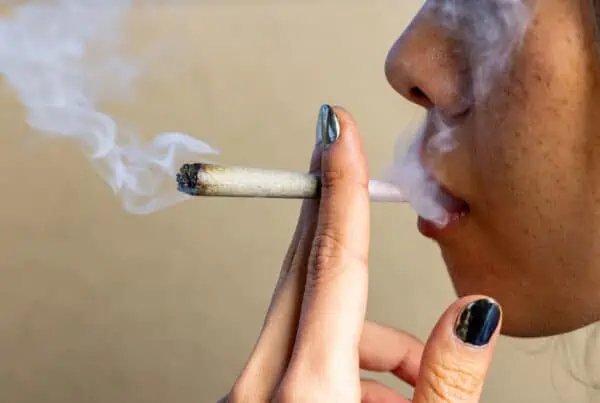
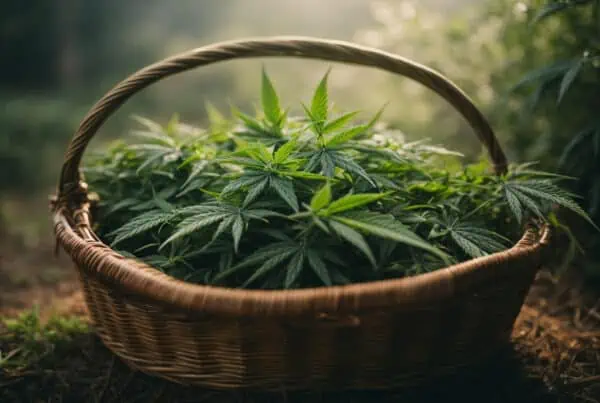

 Jeff was involved in an accident where he endured a traumatic brain injury. He had a week-long stay in ICU where brain surgeons
Jeff was involved in an accident where he endured a traumatic brain injury. He had a week-long stay in ICU where brain surgeons  100% risk free money back guarantee within 48 hours after purchase if student has not completed any of the courses or exams.
100% risk free money back guarantee within 48 hours after purchase if student has not completed any of the courses or exams.